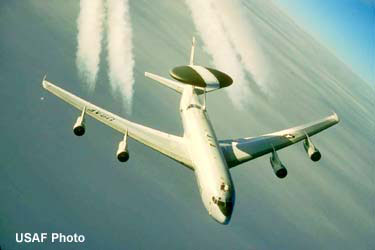
In dealing with environmental pollution, we seem to have focused more on troposphere and sort of neglected the stratosphere. Although we have divided the atmosphere into four different layers, there is no demarcation to separate one layer from another, which goes to say that pollution in any layer of the atmosphere is hazardous to life on earth.
Aircrafts and jet planes as we know are the major reasons for pollution and ozone depletion in the stratosphere. This has brought scientists of the world to attend to the need of the time i.e. to come up with the best alternative fuel for jets.
Princeton Professor of Mechanical and Aerospace Engineering Fred Dryer is all set to achieve this goal. “In order to make alternative jet fuel sources feasible, they need to be compatible with petroleum and produce similar combustion performance,” Dryer said. “This will only be possible if we fully understand how both petroleum and alternative fuels burn and design engines based on this fundamental knowledge,’ he added.
His projects are also being funded by U.S. Airforce, one of the Defense Department’s highly competitive Multi-disciplinary University Research Initiative (MURI) grants. His first attempt is to build a computational and kinetic model to monitor and understand the burning of jet fuel. Besides Princeton University, Case Western Reserve University, Pennsylvania State University and the University of Illinois-Chicago are the three universities that have joined in for this project.
NetJets, a leading company that makes business jets, funds a related project to nullify the emission of green-house gasses that is the sole reason for global warming. NetJets Chairman and CEO Richard Santulli, who has great confidence in this research team, said “NetJets is pleased to be working with the engineers and scientists at Princeton to develop new jet fuels with near-zero net greenhouse gas emissions.”
The collaboration aims at characterizing, analyzing, evaluating different fuels that can alternate for conventional fuels and their effect on the engine, using the computational methods they developed. However, the scientists exhibit pursed lips to what chemicals these alternative fuels may contain. Dryer commented though, that the composition of fuels changes with the geographic source, the refining process and even with the season,” Dryer noted. “Since we have an energy security problem, we need to be sure that alternative fuel sources are going to work and, in order to do that, we need to understand exactly how petroleum-based fuels work alone and in combination with alternative fuels” noted Dryer.
In the US, aviation exhaust is responsible for about 10% of green-house gasses suspended in the atmosphere. The alternate fuels that the research team is working on are hoped to alleviate the accumulation of green-house gasses also.
Coal and biomass are considered as conventional alternatives because coal although cheap and readily available, it’s emission rates are in par with petroleum. Biomass, though less polluting, and the carbon dioxide emitted would be used up by plants for photosynthesis, demands vast lands for plantation to yield biomass.
Therefore, the scientists are attempting to produce a synfuel – a combination of coal and biomass. The crux of the whole process is to isolate and store the carbon dioxide produced while developing this synfuel. The technique called carbon capturing and sequestration is being investigated by Princeton’s Carbon Mitigation Initiative.
Minimizing green-house gasses in the atmosphere is probably the problem that needs to be attended to in order to destabilize and thus destroy totally, the very many environmental threats that seem to grow exponentially to make the earth a greener planet – a better place to live in.
via : Sciencedaily




